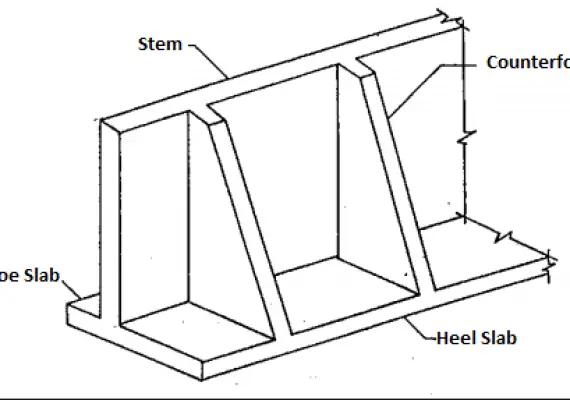What Do Isolation Joints Mean In Concrete?
What Do Isolation Joints Mean In Concrete?
Isolation joints in concrete are gaps between two concrete structures, such as a slab and a wall, that are filled with preformed joint material for the full depth of the slab. This gap completely isolates one slab from another structural member, such as a column, wall, or pipe.
Isolation joints are created by placing the preformed joint material in the desired location before the concrete slab is poured.
The reinforcing steel provided stops at the joint and should not continue through the joint. Isolation joints should extend the full depth of the slab with preformed joint material extending down to the subbase and ending flush with the slab.
Isolation joints are typically used when differential settlement is expected (one slab settles or moves differently to the slab next to it). They can also be used to separate a concrete slab from something else like a wall, post, or pipe.
What Is The Function Of The Isolation Joint?
An isolation joint is a concrete or metal structure used to provide electrical or cathodic independence of a process vessel from fluids it is used to house or process.
Isolation joints allow for anticipated differential horizontal and vertical movements between pavements and structures.
Their purpose is to allow movement without damaging adjacent structures. Isolation joints are used to separate (isolate) adjacent structural members, such as the joint that separates the floor slab from a column.
Expansion joints typically include dowels or other load-transferring devices, while isolation joints do not. Other types of joints include control joints and construction joints.
What Is The Difference Between Expansion And Isolation Joints?
The main difference between expansion and isolation joints is that expansion joints are designed primarily for outdoor situations where weather extremes can add to slab movement, while isolation joints are recommended both inside and out.
Expansion joints are continuous breaks in a material to accommodate movement due to thermal expansion, while isolation joints separate a concrete slab from something else like a wall, post, or pipe.
Expansion joints should extend the full depth of the slab with preformed joint material extending down to the subbase and ending flush with the slab.
Isolation joints should also extend the full depth of the slab with preformed joint material extending down to the subbase and ending flush with the slab.
Both types of joints should be filled with a flexible material that runs along and inside the gap between slabs and other concrete structures.
What Is The Difference Between An Expansion Joint And An Isolation Joint In Concrete?
Expansion joints and isolation joints are both types of concrete pavement joints used to control cracking in concrete structures. Expansion joints are full-depth, full-width transverse joints placed at regular intervals of 50 to 1,500 feet.
They are designed to accommodate pavement expansion due to temperature changes and other factors. Expansion joints typically include dowels or other load transfer devices and allow independent movement only in the direction of expansion.
Isolation joints, on the other hand, are separations between adjacent sections of a concrete structure that allow relative movement in three directions and through rotation.
Isolation joints typically include a full-depth compressible filler material such as an asphalt expansion joint or fibre expansion joint, which is designed to absorb the stresses caused by movement. Isolation joints also help prevent water infiltration into the structure.
What Is An Example Of Isolation Joint?
An isolation joint is a separation between adjacent sections of a concrete structure to allow relative movement in three directions. An example of an isolation joint is one that separates a concrete slab from a wall, column, or drain pipe.
Isolation joints are formed by placing preformed joint material next to the column or wall prior to pouring the slab. Expansion joint material is usually used for isolation jointS.

